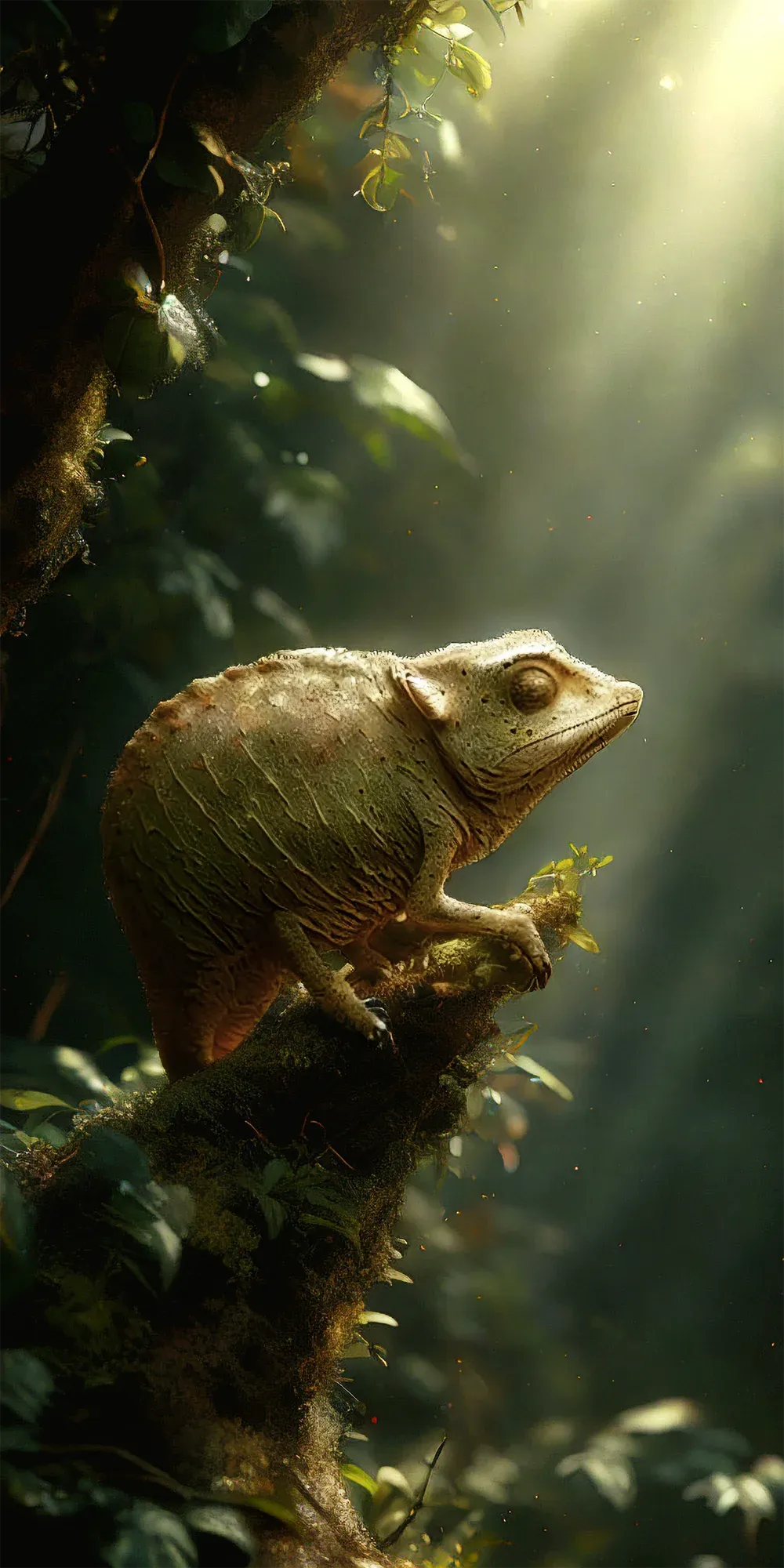The Pygmy Chameleon
The Pygmy Chameleon, also known as the Rhampholeon spectrum, is a small species of chameleon native to forests in East Africa. They are incredibly tiny, reaching only 8-10 centimeters in length, and have a distinctive short, curled tail. Pygmy Chameleons are known for their ability to change color to blend in with their surroundings, making them excellent at camouflage.

| Pygmy Chameleon | |
|---|---|
| Size | 8-10 centimeters (3-4 inches) |
| Weight | Unknown |
| Speed | 3mph (5km/h) |
| Key Strength | Camouflage |
| Biggest Weakness | Size |
| Scientific Name | Rhampholeon brevicaudatus |
| Family | Chamaeleonidae |
| Habitat | Rainforests |
| Geography | Central and East Africa |
| Diet | Insects |
| Lifespan | 3 years - 5 years |

The Pygmy Chameleon
The Pygmy Chameleon, also known as the Rhampholeon spectrum, is a small species of chameleon native to forests in East Africa. They are incredibly tiny, reaching only 8-10 centimeters in length, and have a distinctive short, curled tail. Pygmy Chameleons are known for their ability to change color to blend in with their surroundings, making them excellent at camouflage.
Fun Fact: Pygmy Chameleons have prehensile tails, allowing them to grasp onto branches and climb with ease in their forest habitats.
| Pygmy Chameleon | |
|---|---|
| Size | 8-10 centimeters (3-4 inches) |
| Weight | Unknown |
| Speed | 3mph (5km/h) |
| Key Strength | Camouflage |
| Biggest Weakness | Size |
| Scientific Name | Rhampholeon brevicaudatus |
| Family | Chamaeleonidae |
| Habitat | Rainforests |
| Geography | Central and East Africa |
| Diet | Insects |
| Lifespan | 3 years - 5 years |
Pygmy Chameleon Matchups
We use AI to simulate matchups between the Pygmy Chameleon and other animals. Our simulation considers size, strength, and natural predatory behaviors to determine the most likely outcome.
Pygmy Chameleon: Diet, Predators, Aggression, and Defensive Behaviors
What do Pygmy Chameleons eat?
Pygmy Chameleons primarily feed on small insects such as flies, crickets, and other small invertebrates. They use their long, sticky tongues to catch prey with quick and accurate movements. Some Pygmy Chameleons may also eat small fruits and vegetation occasionally.
Do Pygmy Chameleons have any predators?
Yes, Pygmy Chameleons have several predators in the wild, including snakes, birds of prey, and small mammals. These predators typically target Pygmy Chameleons for their small size and slow movement, posing a significant threat to their survival.
Are Pygmy Chameleons aggressive?
Pygmy Chameleons are usually not aggressive towards humans or other chameleons. They are known for their shy and gentle nature, preferring to blend into their surroundings rather than engage in aggressive behavior. However, male Pygmy Chameleons may display territorial aggression towards other males during mating season.
Do Pygmy Chameleons fight?
Pygmy Chameleons are not known to engage in physical fights with each other. Instead, they use their unique color-changing abilities to communicate and establish dominance within their social hierarchy. Male Pygmy Chameleons may display aggressive behaviors, such as head bobbing and territorial displays, to establish dominance over rival males.
How do Pygmy Chameleons defend themselves?
Pygmy Chameleons rely on their camouflage and color-changing abilities to defend themselves against predators. When threatened, they can change their skin color to blend into their environment or display warning colors to deter potential threats. Additionally, Pygmy Chameleons may puff up their bodies to appear larger or hide in foliage to avoid detection.
What is the biggest weakness of Pygmy Chameleons in a fight?
Despite their remarkable ability to blend into their surroundings, Pygmy Chameleons have weak defense mechanisms when faced with larger predators or aggressive threats. Their small size and slow movements make them vulnerable to fast-moving predators, increasing the risk of being captured or injured in a fight. Additionally, Pygmy Chameleons lack physical adaptations such as sharp claws or strong jaws for self-defense, making them rely primarily on camouflage and avoidance tactics in dangerous situations.
Fun Fact: Despite their small size, Pygmy Chameleons have incredibly long tongues that can extend rapidly to catch insects for food.
Fun Fact: Pygmy Chameleons have independently moving eyes, giving them a wide range of vision and making them excellent hunters.










